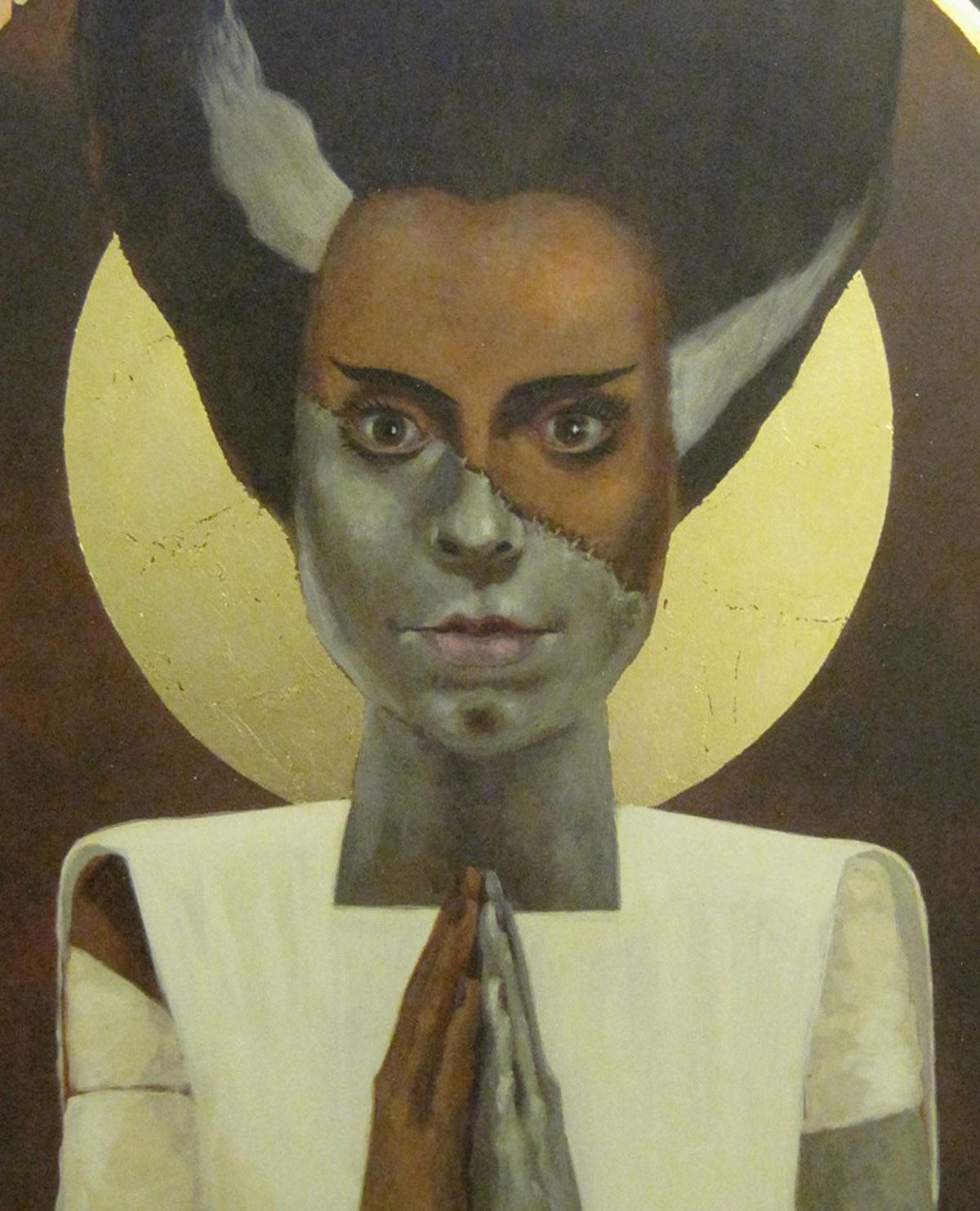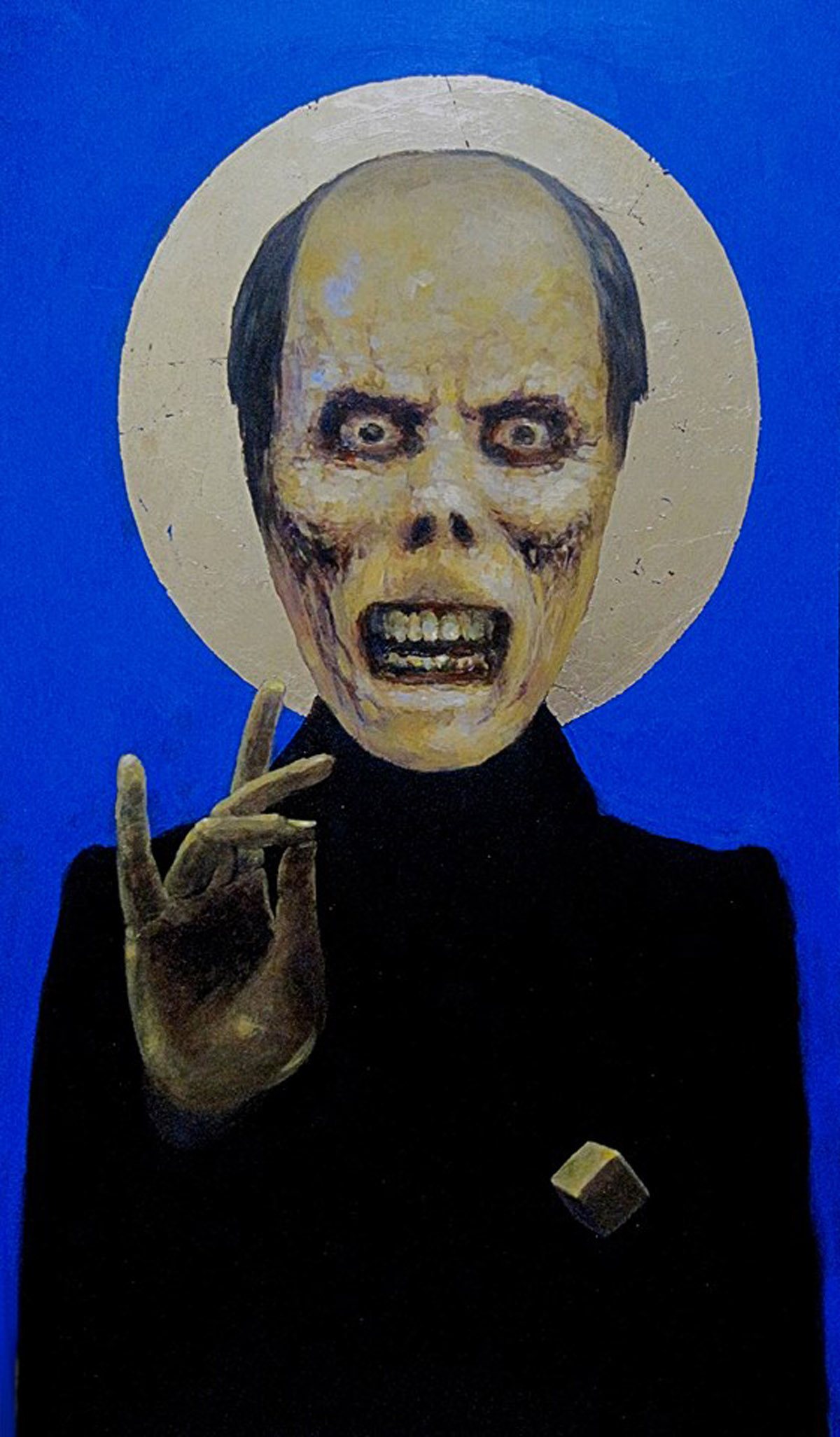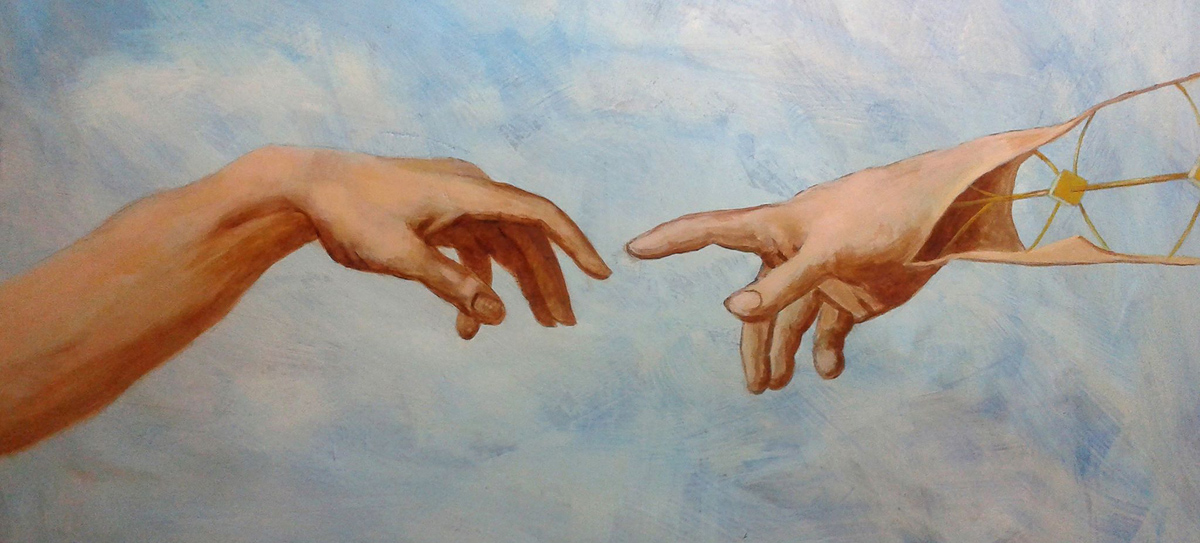
When it comes to storytelling, a single piece of art, or even a collection of pieces, doesn’t provide the kind of narrative structure we get from reading a novel or watching a play or movie. And if there is a story worth telling, it’s usually the one that stems from the imagination of the creator, not the subjective one supplied by the viewer.
But Richard Day Gore, a Fullerton-based artist/writer/musician/you-name-it, works differently. He wants the viewer to have as much ownership at stake in the experience of art as the person who created it—and to realize that every other viewer has their own share.
“I consider myself more of a storyteller [than a painter],” says Gore, whose latest collection, the old-school horror film-tinged “Alternative Gods: Relics From the Tomb of Dr. Conrad Six,” opens Friday. Two years ago, his “Valerie’s Family Secrets” collection was tagged by OC Weekly art critic Dave Barton as one of the best art shows of the year. “I like to do things that engage other people’s creativity, and the idea behind these collections is that they imply a larger narrative without saying what it might be.”
The goal, according to Gore, is to engage every viewer to craft his or her own narrative for the pieces on display—and then realize that everyone else around them is doing the same thing and that “everybody’s interpretation of this stuff is completely valid,” he says. “This is an opportunity for someone to not only spin their own reality [about the story his pieces might be telling], but also to step into someone’s reality and to realize that even if they don’t agree with them, that reality is completely valid.”

Gore says he hopes to light an imagination fuse that prompts viewers to dig deeper than the surface of each painting, much as “Valerie’s Family Secrets” did. “It was so rewarding to me as an artist to hear and watch people go from one painting to another—and to talk to each other and complete strangers about what they thought,” he says. “I felt I had done something right when I saw other people participating in the end result. It was like living theater, where the audience becomes part of the show.”
While these approximately 20 paintings share a similar create-your-own-narrative vein as “Valerie’s Family Secrets,” Gore says it’s also far more “esoteric.” For that earlier collection, the pieces were displayed chronologically and the viewer was told they relate to an artist helping his infirm mother arrange her possessions into shipping cartons, so they could then imagine what her life was like. This time around, we are in a much more macabre world.
Posters explain the backstory: Dr. Conrad Six (doctor of what? Hmm . . .) was the head of a long-established family who, in the 1930s, disappeared under mysterious circumstances. He and his family were fascinated by “the concepts of divinity, the origins of religion, the nature of eternity and the spark of life, all these classic horror-film, Frankenstein-like things,” Gore says.
Years after the doctor’s disappearance, workers in Central Europe discovered an underground complex that turned out to be the ruins of the family castle. There, they found the family crypt decorated with religious icons and artifacts that manifest in Gore’s show as images that many people might recognize as looking an awful lot like classic horror-film characters such as the Phantom of the Opera, the Wolfman and the Bride of Frankenstein.
But there’s something noticeably different. The phantom appears to be flipping a die, the bride appears to be multi-racial, or is it multi-sexual? And there are other paintings—such as the mutilated cover of a family Bible or the finger of Michelangelo’s God attached to an arm that appears to be a wooden model—that can all be seen as clues to unravel the mystery of Dr. Six.

Gore isn’t concerned with viewers cracking some kind of code that reveals what they think his narrative is, but through considering his creations, he wants viewers to craft stories that will give him a different glimpse about his own work.
“I’m really looking forward to hearing the interpretations,” he said. “Is this a family of vampires? Did they embrace a kind of alternative theology? In his search for divinity, did Dr. Conrad Six somehow meld the races or the genders? What if the gods we worship are actually demons? . . . These are all possible interpretations, and they are all valid, and what I can’t wait to hear is someone who comes up with something entirely different, and I think, ‘Oh, man, I wish I had thought of that!’”
“Alternative Gods: Relics From the Tomb of Dr. Conrad Six” at Max Bloom’s Café Noir, 220 N. Malden Ave., Fullerton, (657) 669-0002. Opening reception, Fri., 6-10 p.m. Running for as long as this funky, cool-as-shit place is open, which is probably only until December, when the lease expires.
Joel Beers has written about theater and other stuff for this infernal rag since its very first issue in, when was that again???

